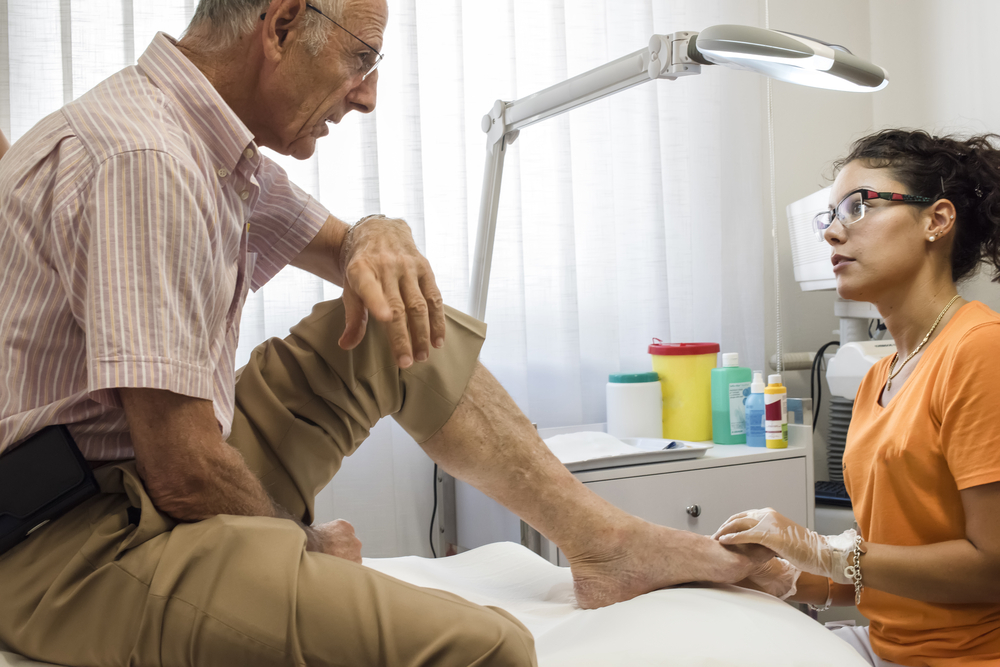Finding a Podiatry EHR That Gets Out of the Way

EHR software for podiatrists must strike a balance between robust features and efficient workflows, so finding the right platform can be difficult. Foot surgeon and podiatrist Dr. Ali Sadrieh stated on a recent episode of On the Health Record that, “the less interaction I have with your EHR to create well crafted documentations of my experience with the patient, the better off I am as a practitioner.”
No podiatrist dreams of spending their time clicking through less-than-functional EMR interfaces when they could be using that time to improve the lives of their patients. As you assess the various electronic health record software vendors on the market, it is of the utmost importance that you understand which EHR features can most positively impact your practice and your overall patient experience. This article breaks down some of those key features to look for in a podiatry EHR.
Free Draw
Many podiatrists will find that a free draw feature can be particularly helpful to their clinical workflows and interactions with patients. As a physician, you have a thorough understanding of why your patient needs that tarsal tunnel release procedure, but to ensure a positive patient experience, you need them to understand as well. By making use of an EHR system that lets you annotate medical images such as X-rays or even photos taken in-office, you can foster greater comprehension of the issue at hand through visualizations.
This feature is particularly effective when paired with a tablet such as an iPad because you will be able to sit next to your patient as you walk through their condition and possible treatment plans. These image annotations will also be useful for your records as a quick way to refresh on a patient’s condition before appointments.
Customizable Templates
Though podiatrists may treat many of the same conditions, they will not always share the same documentation workflows. If you are launching your own solo podiatry clinic, for example, you should not be beholden to clinical workflows that are not a natural fit for you. Instead, podiatrists need to set their sights on an electronic health record software with customizable templates, so that they can make their clinical note-taking more efficient and in-line with their sensibilities.
Your EHR should come equipped with specialty-specific templates that can be used out of the box or edited to fit your needs. Moreover, you ought to be able to create templates from scratch if you deem that necessary for your podiatry practice.
Lab Integrations
To take full advantage of the aforementioned free draw feature, your EMR software should be integrated with labs around the country, so that you can order X-rays, bone scans or MRIs directly from your computer or iPad. Those results would then appear in your EMR for easy reference. When your EHR is integrated with thousands of local and national labs, getting the results you and your patients need will be a breeze.
Mobile and Cloud Based EHR
The best EHR for podiatrists is not going to be tied to a desktop sitting across the room from your patient. Instead, podiatrists should seek out a vendor with both a mobile EHR application and web application. This provides the flexibility needed to access your EHR from anywhere via your phone, tablet or computer.
If you want to improve your connection with your patients, a mobile EHR is a great place to start. You will be able to have more personal patient interactions by simply pulling up a chair next to them with your iPad in hand and listening to what they have to say without turning away to type on a computer.
A cloud based EHR app allows you to take your practice with you on the go, so you can work through your clinical documentation at your own pace. If your EHR has a native telehealth feature, you can even conduct virtual appointments with your patients from anywhere.
Speech-To-Text Dictation
Typing out your notes can be rather time consuming even for the most skilled typists. One alternative that can streamline your notetaking is medical speech-to-text dictation. An EHR platform with intelligent dictation software can allow you to focus on your patient describing their specific foot pain issue while capturing a more complete record of the conversation from the appointment. It is important to remember that this tool must be able to adjust to your accent over time to achieve optimal performance and accuracy, but if you find the right EHR, this tool will be very useful for your practice.
Conclusion
An EHR for podiatry practices needs to be efficient and intuitive. Choosing the best EHR for your practice can have an immensely positive impact on you and your patient’s experience with you. If you consider the features laid out above, you will be on the right track to matching with an EHR vendor that can meet your needs.